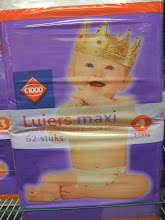 Joshua Hoffine
Joshua Hoffine A horror photographer, Hoffine creates scary photos. All of his images are staged, like a movie, and he only uses photoshop for small details. His full method can be found here. He grew up in Kansas fearing tornadoes and the monster under his bed.
I chose this image because he has juxtaposed something so widely feared with something so commonly protected, increasing the fear factor of the image since the child is seemingly defenseless. Yet interestingly enough the infant doesn't seem perturbed at all by the spider. The sepia tones also make the picture scarier.
 Alexis Hunter
Alexis Hunter
Alexis Hunter has been working as an artist through various mediums since the 1970s. Her artwork wrestles with her ideas about society and the role of women. She has been invited to do countless solo shows, as well as being displayed in various other places. Full biography here.
I chose this image because the woman seems constricted in her clothing, claustrophobic in her role. I like the composition, it's very eye-catching, and the fact that it's black and white can be interpreted to say a lot about the culture, most especially concerning Hunter's feminist ideals.

Yousuf Karsh Karsh was a photographer from Ontario famous for his portraits of famous people. He prided himself on getting the oul of a person in the image, which he said came from a split second where they briefly lift "the mask" that all humans conceal their true selves with. I chose this picture, a portrait of Georgia O'Keefe, because she seemed trapped in her environment, yet somehow free from it, as if she was transcending reality. For some reason the picture was calming. Picture Source




 For my 1st print, I tried a test strip to make sure the contact sheet settings were the best.
Aperture: 4
Filter: 0
Time: 50-70 seconds (10 second intervals)
For my 1st print, I tried a test strip to make sure the contact sheet settings were the best.
Aperture: 4
Filter: 0
Time: 50-70 seconds (10 second intervals)



 I then did another print at the same settings.
Aperture: 4
Filter: 0
Time: 50 seconds
I then did another print at the same settings.
Aperture: 4
Filter: 0
Time: 50 seconds For the 4th print I figured it was best to do a test strip first just to make sure the same settings were still good for this print.
Aperture: 4
Filter: 0
Time: 50 seconds
For the 4th print I figured it was best to do a test strip first just to make sure the same settings were still good for this print.
Aperture: 4
Filter: 0
Time: 50 seconds Then I did a full print at that time.
Aperture: 4
Filter: 0
Time: 50 seconds
Then I did a full print at that time.
Aperture: 4
Filter: 0
Time: 50 seconds






